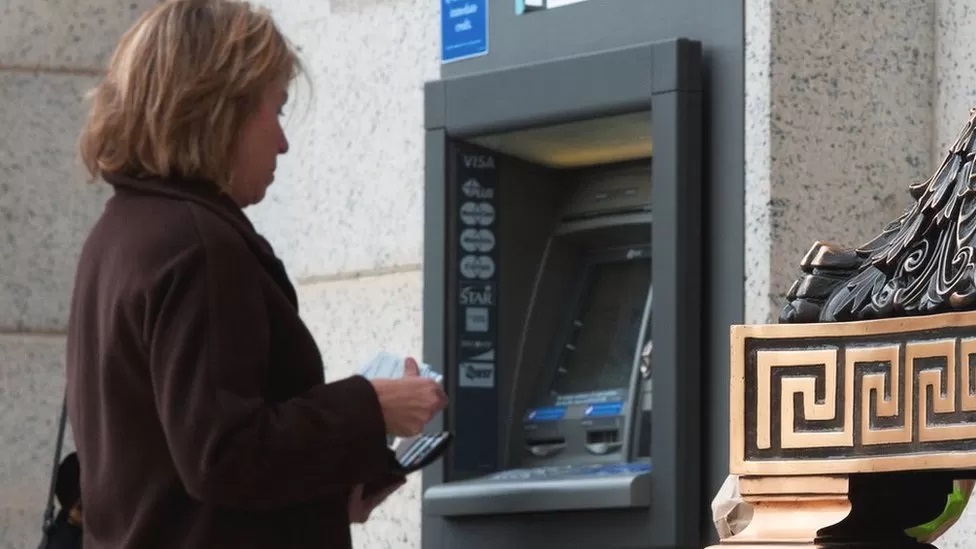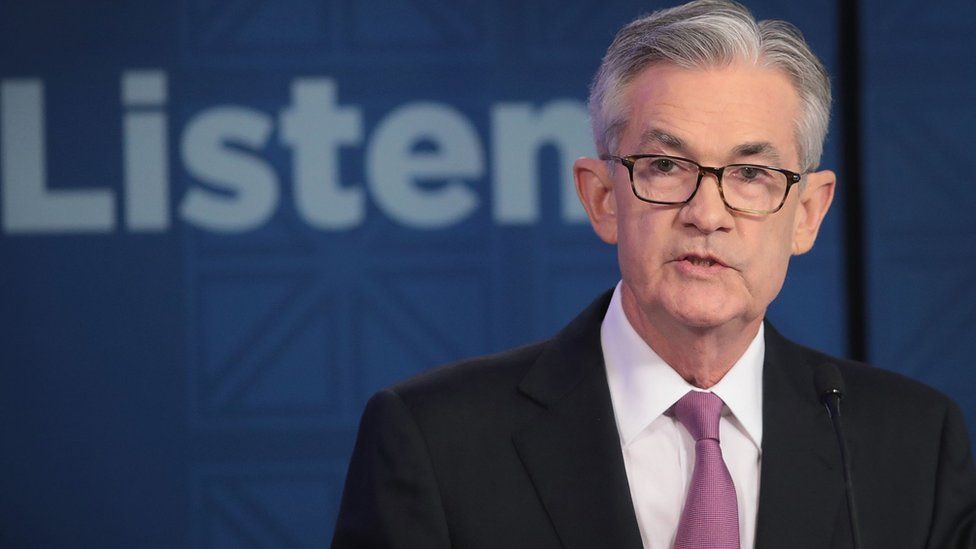
The US central bank has held its key interest rate at its current 22-year high as it seeks to stabilise price rises, which had recently reached near-record levels.
The Federal Reserve’s rate target remains at 5.25%-5.5%.
The bank has been raising borrowing costs with the hope of cooling the economy and slowing inflation, the rate at which prices rise.
It comes after recent data showed the US economy grew faster than expected.
Raising interest rates is one mechanism that central banks can use to tackle inflation. The theory is that by raising interest rates and making it more expensive to borrow, consumers will spend less and that would lead to slower price rises.
The bank had faced criticism, with some suggesting that holding interest rates at higher levels could put the US economy at risk of entering a recession.
But the economy grew by a better-than-expected 4.9% from July to September. The figure was a big jump from the previous three months and was buoyed by a tight jobs market and increased consumer spending.
In a statement on Wednesday, the Federal Reserve said that the vote in favour of holding rates was unanimous, adding that it was prepared to adjust its policy “as appropriate” if risks emerge.

It said that holding the rate would give the bank time to “assess additional information” on how the economy is performing.
Its chair Jerome Powell said a few months of good data on the economy are “only the beginning of building confidence” that inflation was moving towards its target.
He said that there was still a “long way to go”, and said that he understood that high inflation causes “hardship” as it erodes spending power for consumers.
He said that he understood the Fed’s previous run of rate rises was affecting communities and businesses, but that the rate of price rises still remain well above its target.
It signals that the central bank may delay lowering interest rates, as inflation currently stands at 3.7% in the US, which is still above the Fed’s target of 2%.
Independent US economic analyst Peter Jankovskis told the BBC that the rate hold was “no great surprise” with “no immediate impact on stocks”.
He added that “elevated long-term bond yields” also contributed to the Fed’s decision. The yield on long-term government bonds is a key indicator of how investors perceive the strength of the US economy.
Chairman Powell also said that there were “significant issues” the central bank had to take into account.
“Global geopolitical tensions are elevated, including Ukraine”, he said, adding that the Fed was watching the Israel-Gaza situation for its “economic implications” and “proceeding carefully” given the risks faced globally.
But Mr Jankovskis said: “It appears that the Fed sees the economy as strong and is focused on whether additional rate increases might be needed. Higher for longer remains the theme.”
In many economies, higher borrowing costs have led to more expensive loans for businesses, homes and other goods and services, with the end of an era of low-cost borrowing.
Similarly in the UK, households have seen their budgets squeezed by higher mortgage payments or borrowing costs.
The Bank of England is widely expected to hold its current interest rate when it announces its next decision on Thursday.
The rate was left unchanged in September, ending a run of 14 consecutive rises.